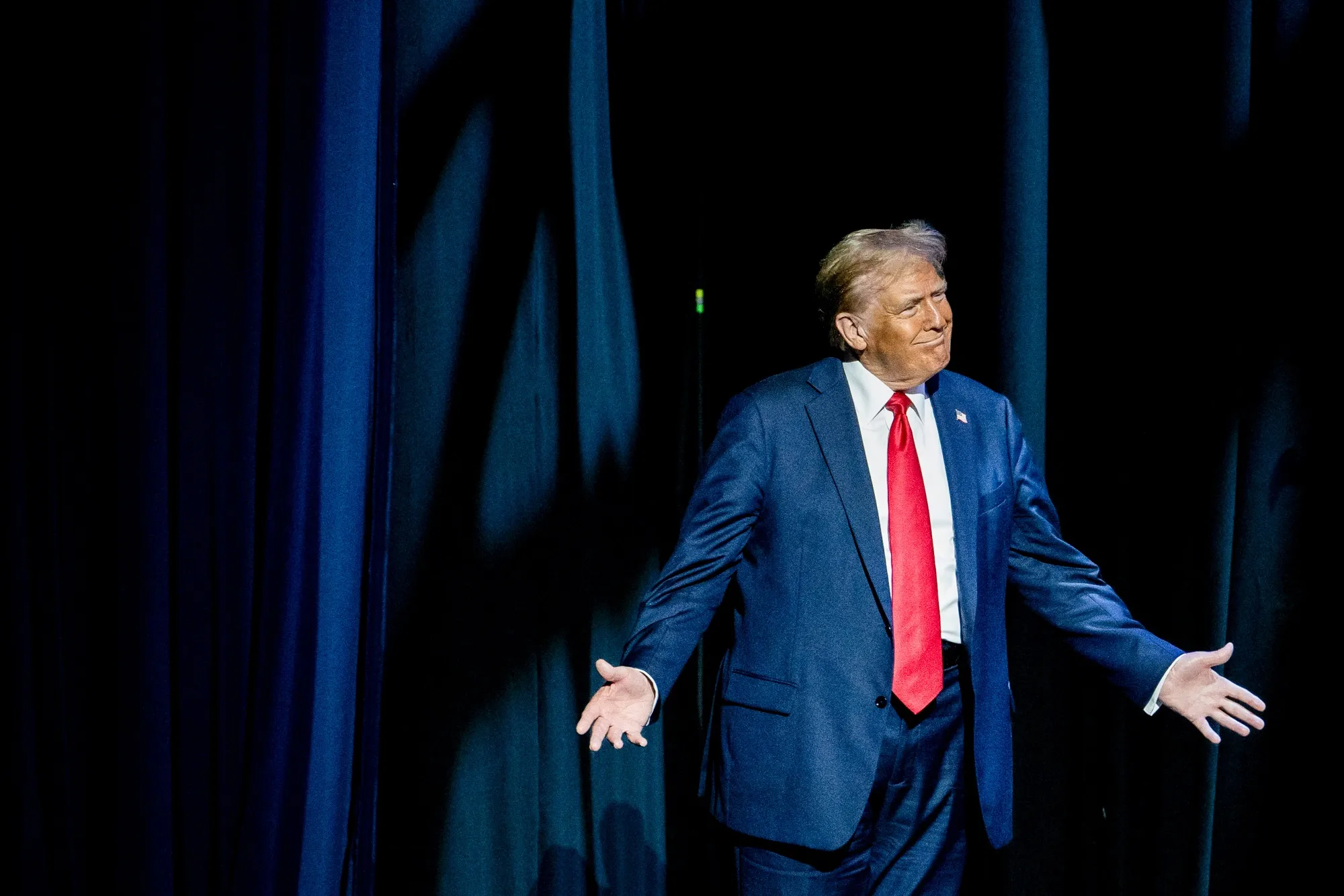Analyzing The Economic Costs Of Trump's Policies

Table of Contents
The Impact of Trump's Tax Cuts on the National Debt
The 2017 Tax Cuts and Jobs Act, a cornerstone of Trump's economic agenda, significantly reduced corporate and individual income tax rates. While proponents argued this would stimulate economic growth through "trickle-down economics," the resulting increase in the national debt raises serious concerns about the long-term economic costs of Trump's policies.
Increased Deficit Spending
- The national debt increased dramatically during the Trump administration. The Congressional Budget Office reported a substantial rise in the deficit, exceeding projections even before the COVID-19 pandemic.
- The tax cuts, coupled with increased military spending, contributed significantly to this deficit expansion. This unsustainable trajectory raises questions about the country's long-term fiscal health.
- Partisan debates raged over the tax cuts' effectiveness, with critics arguing the benefits primarily accrued to the wealthy, exacerbating income inequality rather than boosting overall economic growth. The economic consequences of this policy choice remain a subject of intense scrutiny.
Trickle-Down Economics and its Effectiveness
The core argument behind the tax cuts was that lower taxes would incentivize businesses to invest, creating jobs and increasing wages. However, evaluating the effectiveness of trickle-down economics in this context reveals mixed results.
- While GDP growth was positive during parts of the Trump administration, it's difficult to definitively attribute this solely to the tax cuts. Other factors, such as low interest rates and pre-existing economic trends, undoubtedly played a role.
- Income inequality actually widened during this period, suggesting that the benefits of the tax cuts were not evenly distributed. Data from the Census Bureau illustrates a widening gap between the wealthiest and poorest segments of the population.
- Many economic forecasts predicting significant economic growth as a result of the tax cuts proved inaccurate, highlighting the complexities of economic modeling and the challenges in predicting the actual impact of such sweeping policy changes. Analyzing the accuracy of these economic forecasts is crucial for understanding the economic costs of Trump's policies.
Trade Wars and Their Economic Ramifications
Trump's administration initiated several trade wars, most notably with China. These trade wars, characterized by significant tariff increases, had profound and multifaceted economic ramifications.
Tariffs and Their Impact on Businesses and Consumers
- The imposition of tariffs on imported goods from China and other countries led to increased prices for consumers. This inflationary pressure impacted household budgets and reduced purchasing power.
- Many US businesses, particularly those reliant on imported goods or exporting to affected countries, suffered financially. The added costs associated with tariffs reduced their competitiveness and profitability. Job losses in certain sectors, particularly those involved in importing and exporting affected goods, followed suit.
- Examples abound: tariffs on steel and aluminum impacted manufacturers, while tariffs on consumer goods like clothing and electronics increased costs for consumers.
Retaliatory Tariffs and Global Trade Disruptions
The trade wars triggered retaliatory tariffs from other countries, further disrupting global trade and creating significant economic uncertainty.
- China, for example, responded with its own tariffs on US goods, impacting agricultural exports and other sectors. This led to supply chain disruptions and decreased international trade volume.
- The resulting instability created uncertainty in global markets, affecting investment decisions and hampering economic growth worldwide. The ripple effect of these actions highlights the interconnected nature of the global economy and the significant economic costs of Trump's protectionist policies.
Deregulation and its Economic Effects
The Trump administration pursued a policy of deregulation across various sectors, aiming to reduce government oversight and boost economic activity. However, the long-term economic costs of this approach remain a subject of ongoing debate.
Environmental Regulations and their Economic Impact
- Rolling back environmental regulations, such as those related to emissions and clean water, led to short-term economic gains for some industries.
- However, the long-term economic costs associated with environmental damage, including increased healthcare costs and the potential for catastrophic climate-related events, are far more substantial. The potential impact on future economic growth through environmental degradation should not be overlooked.
Financial Deregulation and Systemic Risk
Reducing financial regulation carries significant risks to the stability of the financial system.
- Relaxing certain rules governing banks and other financial institutions could increase the likelihood of future financial crises, resulting in massive economic losses.
- Historical examples of financial deregulation leading to economic crises, such as the 2008 financial crisis, serve as a stark warning of the potential long-term consequences. These historical parallels underscore the importance of cautious approaches to financial deregulation and the potential economic costs of weakening oversight.
Conclusion: Assessing the Legacy of Economic Policies Under Trump
The economic costs of Trump's policies are complex and multifaceted. While some policies may have delivered short-term gains, a comprehensive analysis reveals significant negative consequences, including a substantial increase in the national debt, disruptions to international trade, and potential long-term risks from deregulation. Understanding these costs is crucial for informed policymaking in the future. It's essential to carefully weigh the short-term benefits against the potentially devastating long-term economic repercussions. We must continue to research and analyze the long-term economic impact of Trump's policies to prevent similar mistakes and ensure a more stable and sustainable economic future. Further research into the economic costs of Trump's policies is vital for fostering informed discussion and responsible economic decision-making.

Featured Posts
-
 Strengthening Nordic Security The Role Of Swedish Tanks And Finnish Troops
Apr 22, 2025
Strengthening Nordic Security The Role Of Swedish Tanks And Finnish Troops
Apr 22, 2025 -
 Ftcs Appeal Against Microsoft Activision Merger Approval
Apr 22, 2025
Ftcs Appeal Against Microsoft Activision Merger Approval
Apr 22, 2025 -
 Turning Poop Into Podcast Gold How Ai Simplifies Scatological Document Analysis
Apr 22, 2025
Turning Poop Into Podcast Gold How Ai Simplifies Scatological Document Analysis
Apr 22, 2025 -
 Fox News Faces Defamation Lawsuit From Ray Epps Over January 6th Reporting
Apr 22, 2025
Fox News Faces Defamation Lawsuit From Ray Epps Over January 6th Reporting
Apr 22, 2025 -
 Responding To Trump Kyivs Options In The Ukraine Conflict
Apr 22, 2025
Responding To Trump Kyivs Options In The Ukraine Conflict
Apr 22, 2025
